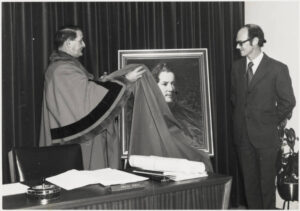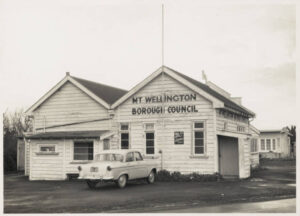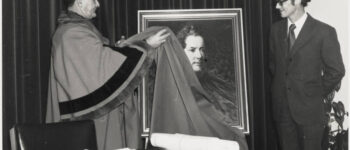1847: Panmure
January 10, 2023
By AHNZ
 Panmure Village got going in 1847 as one of the Fencible Settlements guarding Auckland’s southern frontier from belligerent Maoris. Alongside Onehunga, Otahuhu, and Howick, this village was populated by demobilised Imperial Army pensioners and their wives and children. The men were required to be at the ready if needed according to this scheme of Governor George Grey. The towns were defendable/de-Fencible.
Panmure Village got going in 1847 as one of the Fencible Settlements guarding Auckland’s southern frontier from belligerent Maoris. Alongside Onehunga, Otahuhu, and Howick, this village was populated by demobilised Imperial Army pensioners and their wives and children. The men were required to be at the ready if needed according to this scheme of Governor George Grey. The towns were defendable/de-Fencible.
There were 4 Maori place names available but only 2 stuck, Onehunga and Otahuhu. Understandably the other two Fencible villages picked up names after political-military commanders of the time. Fox Maule-Ramsay, Lord Panmure, was Secretary of State for War and the Colonies in the Palmerston Ministry of the Imperial Government. Henry John Temple, Lord Palmerston, of course did not miss out on his share of New Zealand towns being named after him with Palmerston and Palmerston North. Without asking any further questions it would be logical to assume that Panmure was, from the start, like Lords Panmure and Palmerston, very Scottish. And, very Lefty. Election results over the years favoring Labour back that idea up. Ref. The Real Jock, AHNZ
As for Howick, it was named after Henry George Grey the Viscount Howick. Another Under-Secretary of State for War and the Colonies and another Lefty Liberal Whig. It seems as if George Grey was keen to honor figures such as Howick, Panmure, and Palmerston and maybe that had something to do with his plans for a political career back in Britain? It also seems likely he was doing someone back Home a favor by helping demobalise old soldiers and put them out to pasture which solves a political problem back in Britain.
 The Panmure kernel endured generation upon generation in a quiet corner of the old Eden County. While other localities broke out of Eden to form themselves into boroughs or cities, Panmure remained no more than an old style Road Board. In 1945 it only had a population of 504¹ and I’m sure they had close ties and enjoyed their autonomy and set themselves low rates. So Panmure remained a prosperous pastoral farming patch at the Tamaki River estuary left alone by the rest of Auckland to be its smallest local government jurisdiction.
The Panmure kernel endured generation upon generation in a quiet corner of the old Eden County. While other localities broke out of Eden to form themselves into boroughs or cities, Panmure remained no more than an old style Road Board. In 1945 it only had a population of 504¹ and I’m sure they had close ties and enjoyed their autonomy and set themselves low rates. So Panmure remained a prosperous pastoral farming patch at the Tamaki River estuary left alone by the rest of Auckland to be its smallest local government jurisdiction.
Then, in about 1955, the Townspeople allowed a poll to go ahead in which they voted to amalgamate with Mount Wellington Borough. The history of this fateful decision may be lost but I bet it resembles the plotline of the movie Up (2009) with many locals anxious about their family territory being assimilated by hungry neighbors. I wonder if new people had moved in to tip the poll away from local autonomy, perhaps returned soldiers given land by the Government?
Mt Wellington Borough Council was given the same treatment: Another amalgamation merged it with Otahuhu Borough into Tamaki Borough thenTamaki City as of 28 January 1987. This City was, in turn, terminated on 26 October 1989 and absorbed into Auckland City² thanks to Michael Bassett and Brian Elwood’s Great Amalgamation. Panmure’s grip on its own civic life shrunk magnitudes smaller again when Auckland City became mixed in with Manukau City, Waitakere City, North Shore City, and others thanks to Rodney Hide’s Supercity.
2 thoughts on "1847: Panmure"
Leave a Reply
 Like Comment Share
Like Comment Share






By 1955 I dear say the majority of those soilders you speak of would have passed away.
1840s retirees? Deceased a century later? You can’t go wrong with that assumption.